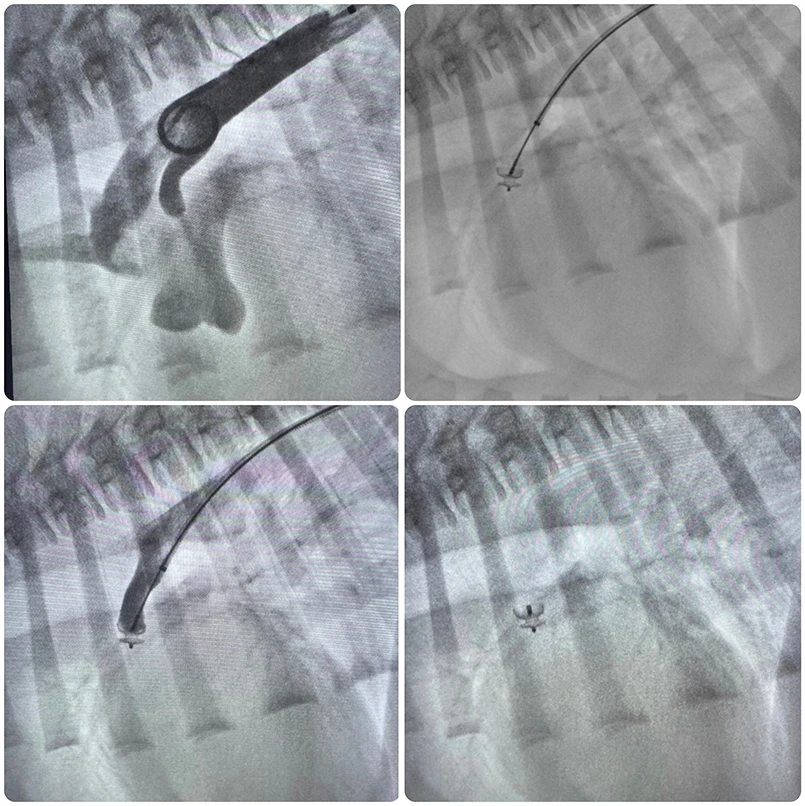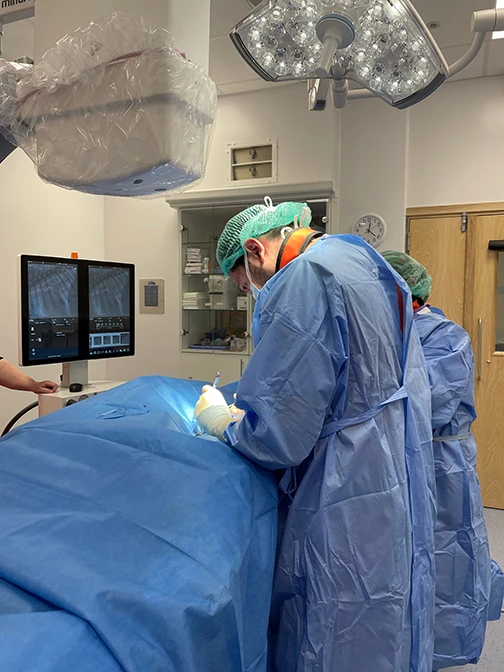Bear Undergoes Minimally Invasive Occlusion of his PDA
Bear is a 4-month-old German Shepherd puppy that was first seen by the Cardiology and Interventional Cardiology Service at Blaise Veterinary Referral Hospital for investigations into his previously reported heart murmur and intermittent exercise intolerance.
Cardiology investigations performed at Blaise confirmed the presence of a left-to-right shunting patent ductus arteriosus (PDA). This is one of the most common congenital heart diseases reported in puppies, which typically present a loud, even thrilling, continuous heart murmur, but dogs can otherwise appear asymptomatic at home. The presence of this disease and its haemodynamic significance, as well as the evaluation for the ideal treatment options, can be confirmed by a Doppler echocardiography performed by a specialist.
The “ductus arteriosus” is a small vessel that exists in normal conditions in the developing foetus, allowing the communication of blood from the pulmonary artery into the descending aorta, and in this way, bypassing the lungs, which are not being aerated while the foetus is developing. In normal conditions, the ductus arteriosus should close within few hours after birth. However, in some cases, the closure of the ductus can be incomplete, allowing the communication of blood from the higher-pressure systemic circulation (i.e. aorta) to the lower-pressure pulmonary circulation. When this vessel is left “open” (i.e. patent), it can cause pulmonary overcirculation, which can lead to left-sided congestive heart failure and/or pulmonary hypertension and reversed blood flow (i.e.right-to-left).

The goal of treatment is to close the ductus arteriosus as soon as possible, to reduce the risk of life-threatening complications. This can be performed through a thoracotomy (i.e. “PDA ligation”), or by a minimally invasive procedure through the patient’s femoral artery, using specialised cardiac catheters (i.e. “PDA occlusion”).

Bear underwent minimally invasive occlusion of his PDA at Blaise. The procedure was uneventful, and the heart ultrasound performed on the following morning confirmed complete occlusion of the ductus. Bear was discharged the morning after the intervention, with a short course of antibiotics and anti-inflammatories. We are planning to see Bear back a month after his intervention, at which time he should be completely discharged from Blaise to lead a happy and healthy life.